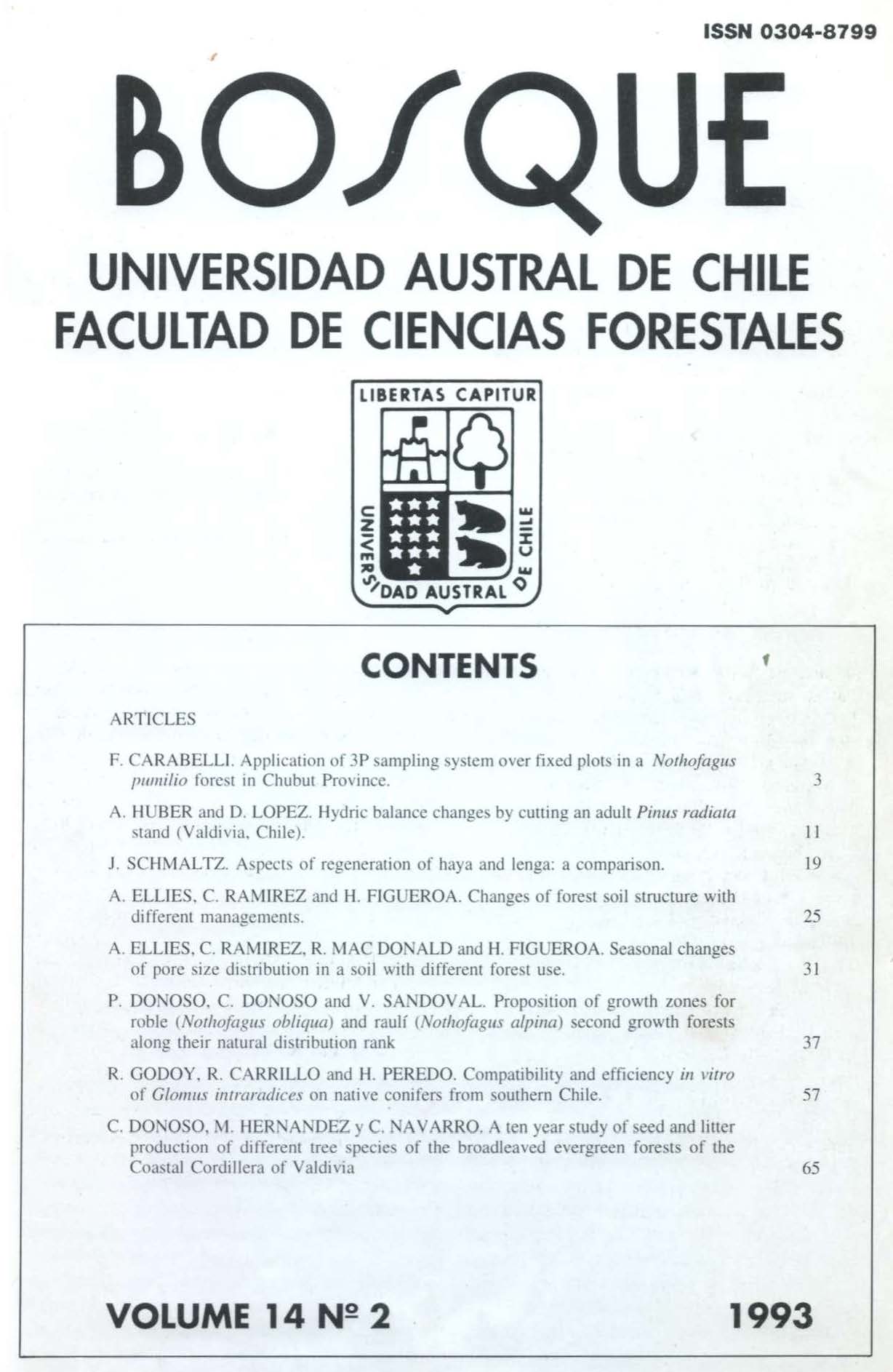Aspects of regeneration of haya and lenga: a comparison
Main Article Content
Abstract
The European beech (Fagus sylvatica) is a shade tolerant tree. Young trees have poor increments, while older trees maintain high increment rates over a long period. Natural regeneration is usually initiated using the shelterwood method. During the first cutting, the canopy of the overwood should be reduced by 20%. From a successful natural regeneration one can expect more than 6 plants/m2.
The lenga (Nothofagus pumilio) is a semi shade tolerant tree. Increments of young trees are even poorer and remain modest throughout the whole stand development period. Since most of the lenga forests have grown too old and are deteriorating, one should now focus on initiation of their natural regeneration.
In an experiment, three different treatments of natural regeneration of lenga forests were compared:- cutting of patches with a diameter of 20-40 m - strip cutting with various widths - shelterwood method Survival rates of young plants under shelterwood and small patches were excellent but decreased with the increasing width of strip cuttings. Strips with widths of more than 30 m are not suitable for semiarid zones with high summer temperature. Therefore the shelterwood method for natural regeneration of lenga is recommended for the Patagonian Andes north of Lake Buenos Aires.

